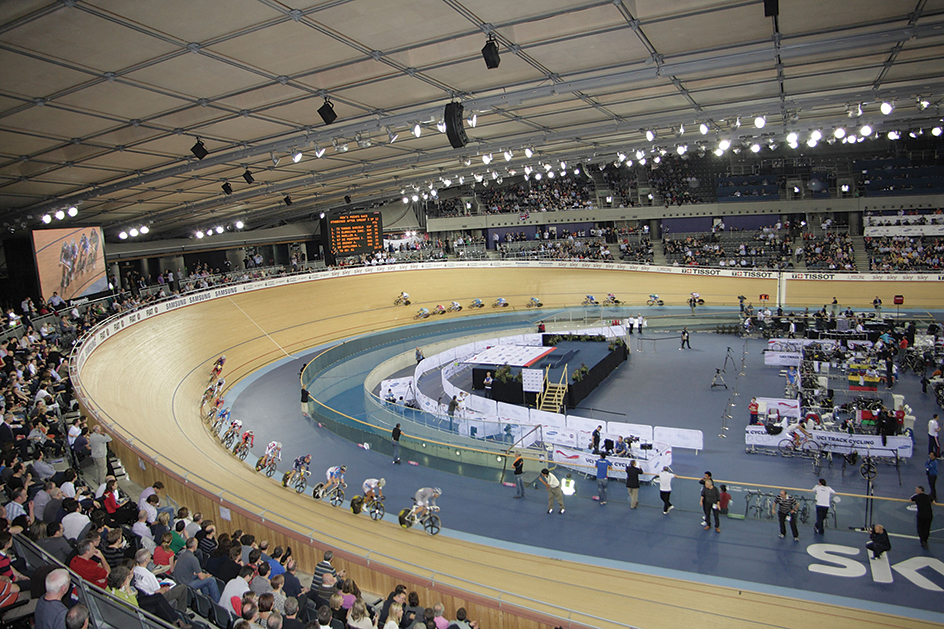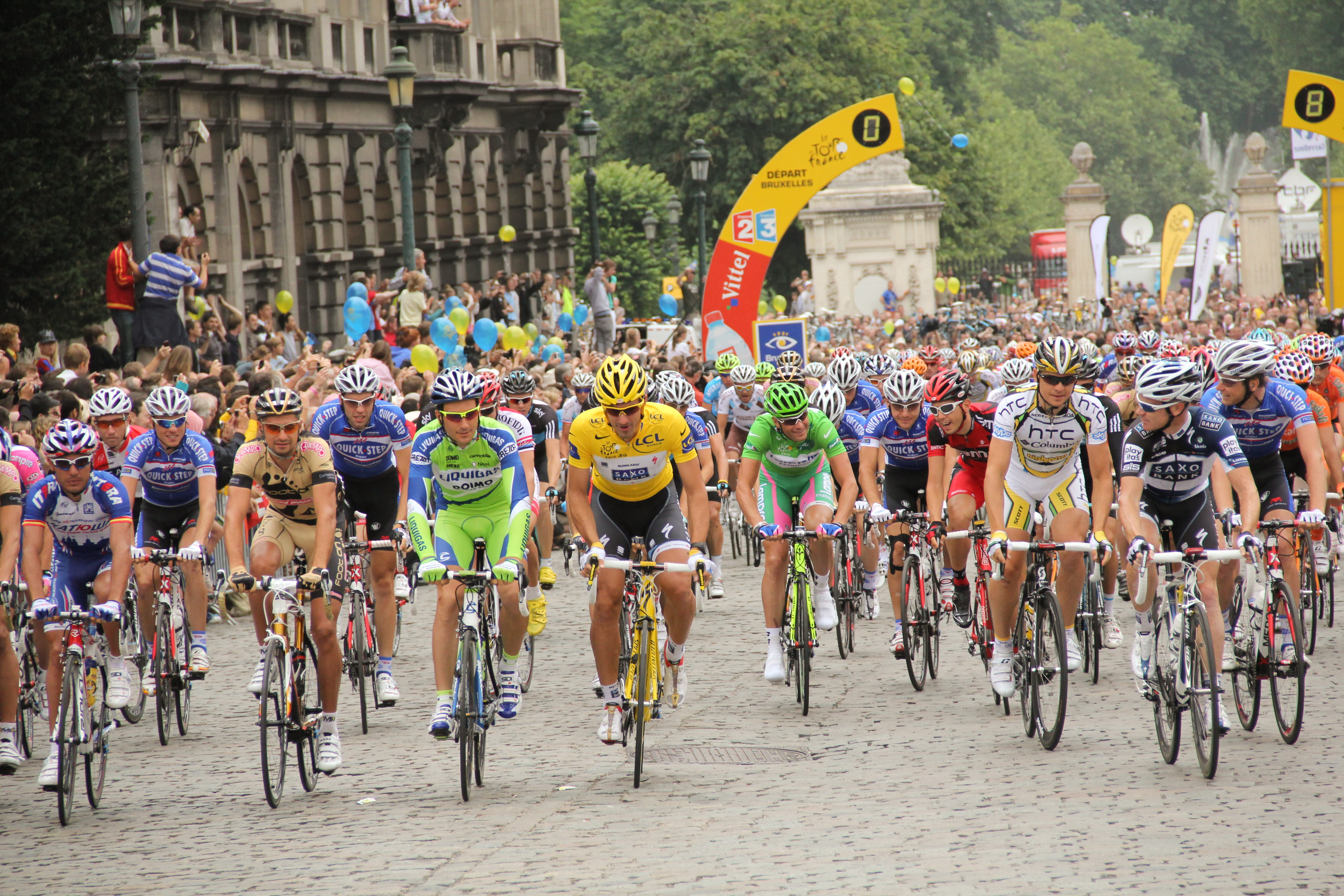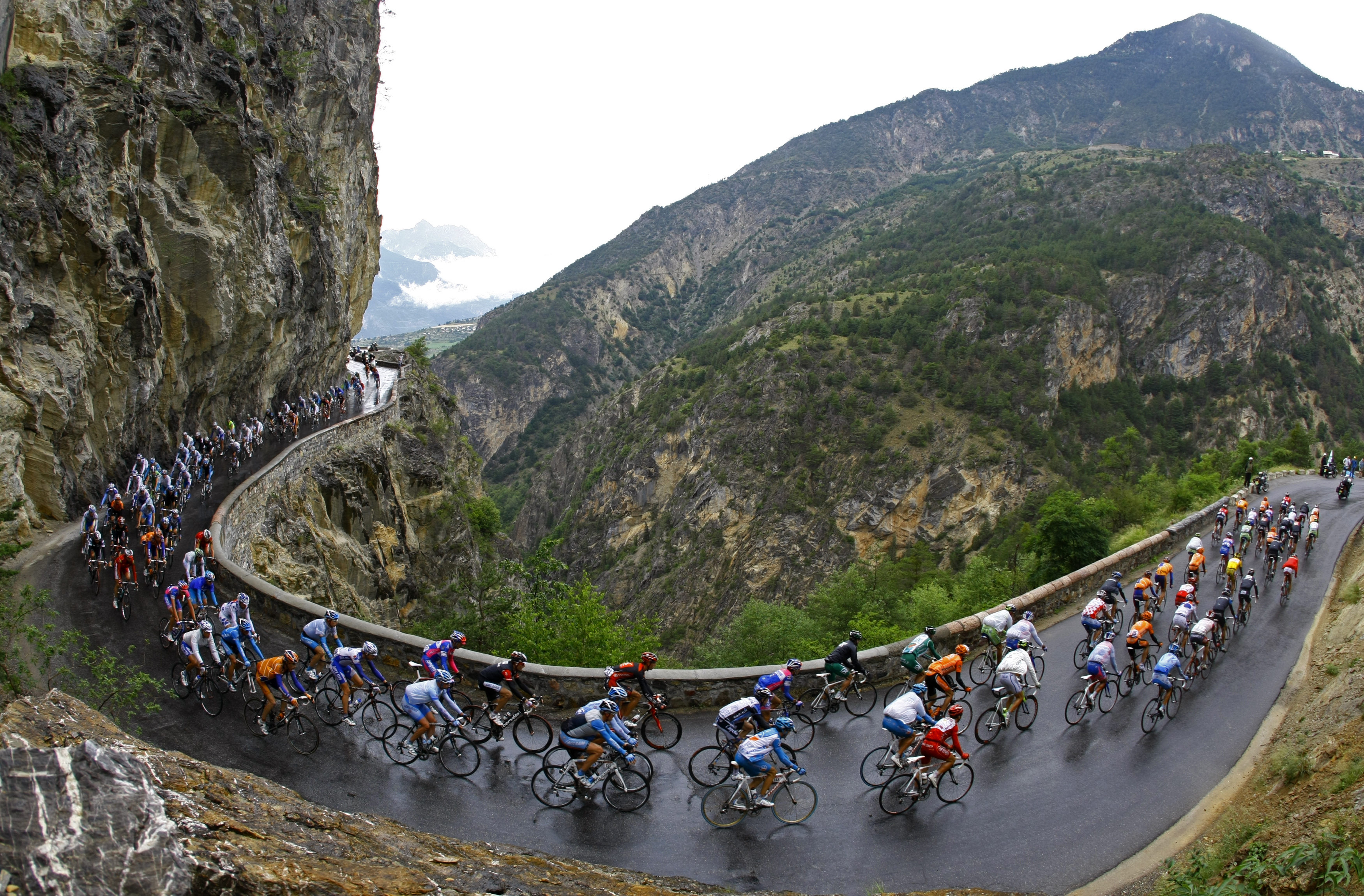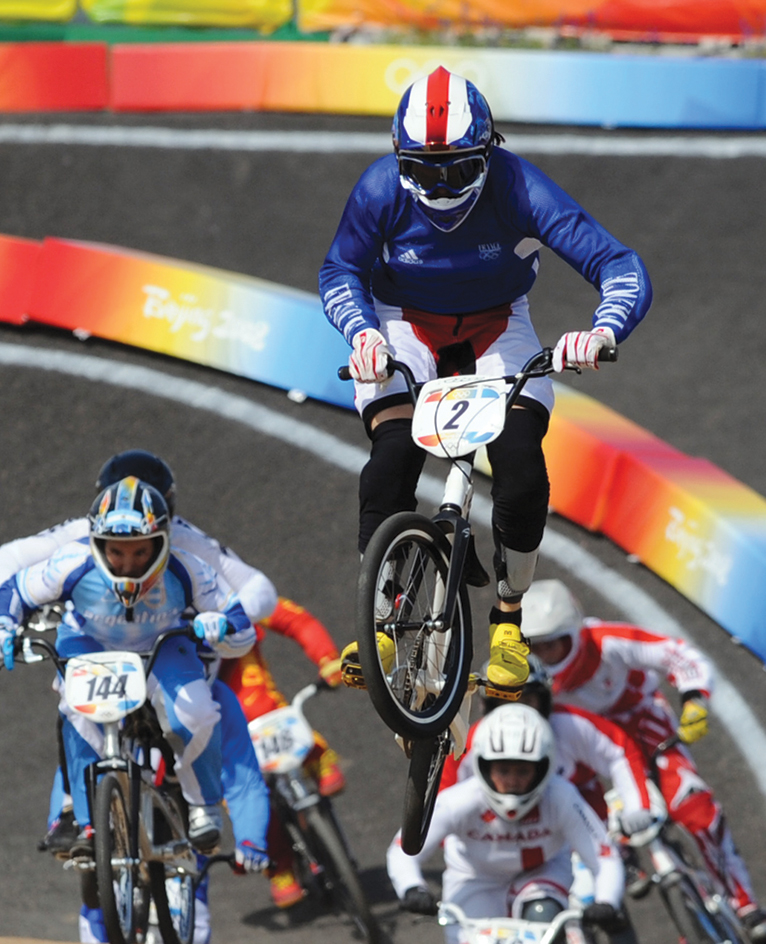Bicycle racing, also called cycling, is one of the most popular sports in the world. Cycling is especially popular in Europe, where millions of fans follow the feats of great cyclists. Bicycle racing has been an event in the Olympic Games since the modern games originated in 1896. USA Cycling controls most of the organized bicycle racing events in the United States.
Loading the player...Cyclists in the Tour de France
There are four main kinds of bicycle races—track races, road races, mountain bike races, and BMX (bicycle motocross) races. Each kind requires a distinct type of bicycle.
Track races
are held on oval tracks made of wood or concrete called velodromes. The distance around such tracks ranges from 140 to 500 meters (459 to 1,640 feet). On most cycling tracks, the track slopes inward. The slope steepens at both ends of the track. Velodromes may be located indoors or outside.

Track events may include races for individual cyclists, for teams of two or four, or for 30 or more cyclists at one time. Most races take place on outdoor tracks. These races can be individual sprints (short races) as short as 200 meters (650 feet). Other races are as long as 50 kilometers (31 miles). Some races are time trials, in which racers compete against the clock over a set distance. The match sprint and keirin are races that involve tactics as well as speed.
A track bicycle has no brakes and only one gear. Its weight ranges from 14 to 18 pounds (6.4 to 8.2 kilograms). The cyclist slows down or stops by pushing back on the pedals.
Road races
are the original, and most popular, forms of bicycle racing. Hundreds of cyclists may start a race. They race over a course between two towns, or around a specific route for a set number of laps.

The most popular road race is the annual Tour de France in which almost 200 contestants race through western Europe. The Tour lasts 23 days and covers about 2,500 miles (4,000 kilometers). The distance is divided into sections called stages. Cyclists are timed in each stage. The cyclist with the lowest total time for all the stages wins. The event was dominated by Europeans until Greg LeMond of the United States won the Tour in 1986, 1989, and 1990. The American cyclist Lance Armstrong won the event seven consecutive times from 1999 through 2005. However, he was later stripped of his titles after admitting to using performance-enhancing drugs during the races.

The bicycles used in road races have frames made of lightweight steel, aluminum, titanium, and carbon fiber tubing. They have brakes, gears, and narrow tires. The bike weighs about 131/4 to 151/2 pounds (6 to 7 kilograms).
Mountain bike races.
Off-road races began in the United States in the 1980’s after the invention of the mountain bike. Mountain bikes have sturdy frames, multiple gears, and wide, knobby tires for extra traction. Some mountain bikes have suspensions (spring systems) to cushion against road shock.
Most mountain bike races are held on dirt trails, but any unpaved ground can be used. In one popular event, racers follow a specially designed course for a set number of laps. Specialty events include downhill races, uphill races, and observed trials, in which a rider must slowly guide the bicycle through an obstacle course without putting a foot on the ground. A well-known off-road race is the annual winter Iditarod Trail Invitational in Alaska, in which racers follow a portion of the snow-packed Iditarod Sled Dog Trail. The race covers 210 miles (338 kilometers).
BMX races.
became popular in the 1970’s, especially among young people in the United States. The sport is also popular in Europe and Australia. They are held on dirt tracks less than 1/4 mile (400 meters) long. The tracks have many bumps and sharp turns. The cyclists ride bicycles that have small wheels and wide tires to help prevent them from slipping in the turns. Bicycle motocross racers wear full helmets and padded clothing for protection against falls, which occur frequently. BMX was included in the Summer Olympic Games for the first time in 2008.

